Urban heat islands vividly illustrate the price humans will pay in the world’s rising temperatures. This will mean more trips to the hospital for heart, kidney and lung ailments. Solutions exist but are expensive and take time. For cities like Baltimore, the clock is ticking. The Code Red series is a collaboration among the University of Maryland’s Howard Center for Investigative Journalism, Capital News Service and NPR.
By Ian Round, Jazmin Conner, Jermaine Rowley and Sandy Banisky
CAPITAL NEWS SERVICE
Heat radiates from the asphalt and concrete that cover the streets, the sidewalks, the alleys, even the tiny yards behind the homes in the East Baltimore neighborhood of McElderry Park. Trees are scarce. And air doesn’t move much when it comes up against block after block of rowhouses.
So as a dangerous 11-day heat wave tormented the city in July, the hottest month ever recorded on the planet, fewer and fewer residents were going outside.
“Can’t even put your head out the door,” said Tammy Jackson, 48, on a day when the temperature outside hit 100 degrees Fahrenheit and 92 degrees in her home. “This is too much. Oh Lord, this is too much.”
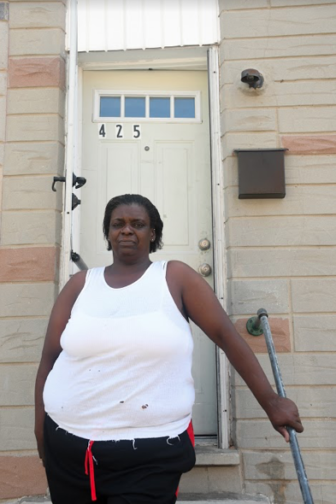
Tammy Jackson poses on the steps of her rowhouse in McElderry Park, Baltimore’s hottest neighborhood, on July 2, 2019. At 10 p.m., Sunday, July 21, the heat index on the first floor of Jackson’s home registered 93 degrees, 9 degrees hotter than it was outside. University of Maryland Photo/Maris Medina
But it is going to get worse. In McElderry Park and around the world, in communities rich and poor, downtown and in the suburbs, weather disasters loom. And experts are using language ever more dire.
Average annual temperatures in Baltimore have gone up more than 3 degrees over the last century, nearly twice as much as the rest of the country.
More and more people, including Del. Robbyn Lewis, who represents parts of East Baltimore, are replacing the words “climate change” with stronger language.
“We are,” she said, “in an emergency.”
Researchers at Portland State University in Oregon and the Science Museum of Virginia have mapped neighborhoods called urban heat islands, and data shows that temperatures here and in surrounding neighborhoods can run 8 degrees hotter than in communities that have more trees and less pavement. McElderry Park, which despite its lyrical name offers little green space, is one of these.
Residents in the hottest areas have higher rates of chronic illnesses affected by heat, including asthma and COPD. In hot weather, emergency medical calls for some chronic conditions increase. The rate of emergency medical calls for cardiac arrest and congestive heart failure, for example, nearly double when the heat index hits 103 degrees.
People with lower income live in hottest areas
Households in the city’s hottest areas are poorer, which means the residents don’t have the resources to move out.
This is true across the country. In a majority of the country’s most populous cities, people with lower incomes typically lived in the hottest areas, an investigation by journalists from NPR and the University of Maryland found.
Sacoby Wilson, a professor at the University of Maryland School of Public Health, says people in low-income neighborhoods walk more, ride more buses and drive fewer cars, so they contribute less to climate change. And yet they are more vulnerable to dying in extreme heat.
“Environmental justice and climate change,” Wilson said, “are inextricably linked.”
Rowhouses, Baltimore’s signature architecture, trap heat and stay hot even when the heat eases on summer nights. Crime rates are higher, so many people won’t put an air-conditioning unit in a first-floor window for fear of break-ins.
The problems are not new. Many stem from historical segregationist zoning and lending policies that for decades limited where black citizens could live.
During an 11-day July heat wave, Baltimore’s health department put out press releases advising citizens to drink water, cut back on outdoor activities and find relief in designated air-conditioned cooling centers. Inside the rowhouses, even those with an air-conditioning window unit, the heat simmered.
Reporters from the University of Maryland’s Howard Center for Investigative Journalism and Capital News Service placed sensors that record heat and humidity inside several homes in McElderry Park and nearby neighborhoods. Those sensors recorded temperatures that reached as high as 97 degrees and heat index values of 119 degrees.
In some homes, those readings showed that it was hotter inside than outside.
At 7 p.m. Friday, the heat index in Baltimore hit 103 degrees. Inside the bedroom Stephanie Pingley’s niece shares with one of Pingley’s three sons, it was 13 degrees hotter, with a heat index of 116 degrees. All of her boys have asthma.
By Saturday, the heat index inside the second-floor apartment of Michael Thomas and Alberta Wilkerson hit 112 degrees. A fan pushed hot air around. Thomas, 61, has emphysema. Wilkerson, 49, has had a heart attack.
“Just living through it,” Thomas said.
Three in Baltimore died from heat-related illnesses this summer
On Sunday, Solomon Simmons, who is retired from a job at the Johns Hopkins Bayview Medical Center, went to Hope Community Church, where he is a deacon. “We had trouble getting the church cool,” he said.
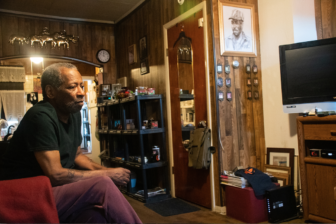
As he sits in the living room of his rowhouse in McElderry Park June 26, 2019, Solomon Simmons says he worries about the cost of his electric bill during Baltimore’s increasingly hot summer months. University of Maryland Photo/Amina Lampkin
Simmons, 71, will not put an air-conditioning unit in a first floor window facing the street “because of security.’’ But especially for children, older residents and people coping with chronic diseases, air conditioning is the answer.
Tammy Jackson, who has asthma, said she had to stop cooking dinner one July evening when the heat made it hard for her to breathe. The next day, she told her husband, “Baby, I can’t cook until I get AC.”
Twenty people have died of heat-related illnesses in Maryland so far this year, three of them in Baltimore, according to data through Aug. 28.
Historically, the Baltimore area has averaged about six days a year when the heat index exceeded 100 degrees, according to new research from the Union of Concerned Scientists and the University of Idaho.
If no action is taken to reduce carbon emissions, by mid-century that figure will rise to more than 37 days annually, according to the researchers.
As temperatures in Baltimore reached 100 on July 20, most everyone around the city was staying inside. “This is the quietest the block ever been,” Tammy Jackson said. “I can’t believe it.”
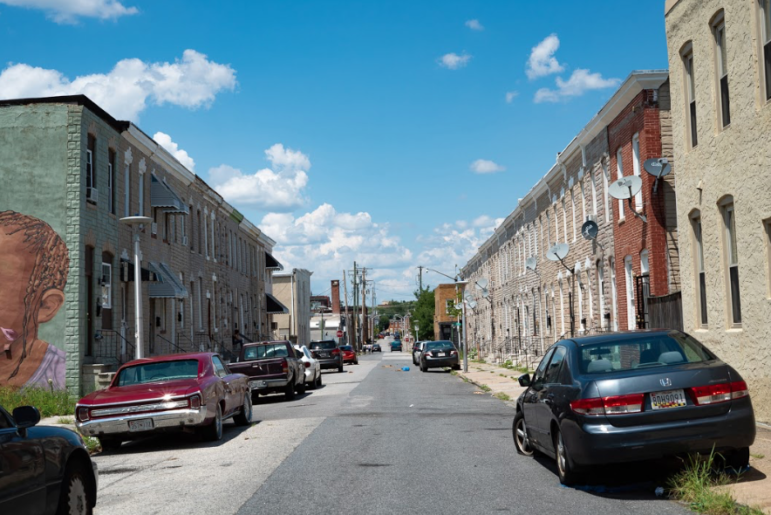
The sun beats down on the 500 block of North Rose St. in the McElderry Park neighborhood on July 24, 2019. Like many streets in East Baltimore, the block offers no shade and almost no cooling breeze for residents. Wide Angle Youth Media Photo/Sonia Hug
NPR reporters Meg Anderson, Nora Eckert and Sean McMinn and University of Maryland reporters Jake Gluck, Jane Gerard, Roxanne Ready, Theresa Diffendal and Sean Mussenden contributed to this story.

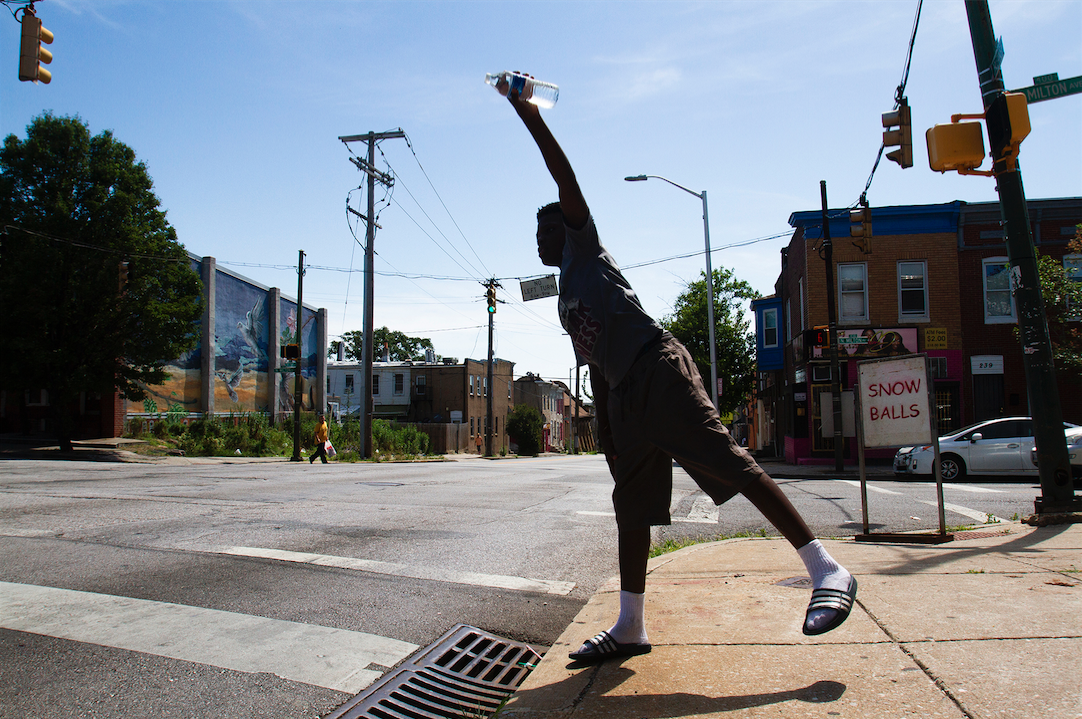

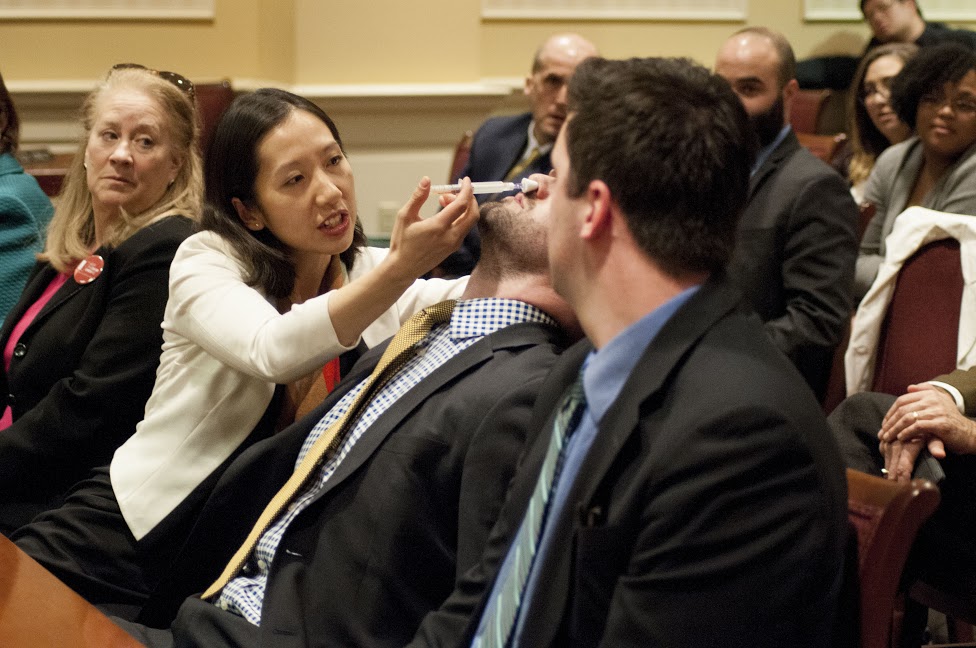

Recent Comments